I am absolutely fascinated by these kinds of studies, and was recently able to visit the Evolutionary Morphology lab and speak with Dr. Kuratani about his work, hobbies, and favorite movies.
Interview with evolutionary morphologist Shigeru Kuratani (Part I)
Have you always been interested in evolutionary morphology?
Dr. Kuratani: Yes, I think so. I can remember when I was 8 years old, in 1966, there was a TV program in Japan called Ultra Q, which was a prequel to the very popular Ultraman TV show. There were lots of heroes fighting big giant monsters. The children of my generation got really crazy about those TV shows, and so did I, including Godzilla. About the time of that TV program, they started producing special weekly monster comic magazines. I had asked my mom to get me the most recent one, but when she came back from the store she said it was sold out. Instead, she had gotten a rather scientific book that looked amazing and more expensive than the comic. It was a pictorial textbook about dinosaurs and other fossil species.

Ultra Q
I didn’t argue about it or complain at all. I was really interested in it, and it was where first I learned about Paleozoic fish that didn’t have jaws — the agnathans. I also remember realizing that some of the earliest jawed vertebrates really looked very similar to the oldest jawed fish. The transition seemed really smooth. Of course, at that time I didn’t dream that I would someday use lampreys to help solve the question of how the position of the biting jaw evolved. But clearly, that book made an impression on me — I still remember getting it! — and I was interested in how body plans change from a very early age.
I noticed that your research focuses on hagfish and turtles. What makes those animals special/good for studying evolutionary morphology?
Dr. Kuratani: Well, if you are interested in vertebrates, you want to know what happened at the beginning. What was Step 1 of vertebrate evolution? What was step 2? So, we want to know about jaw acquisition or the separation of nostrils into two holes – elements that make up the very basic vertebrate body plan. For me, the establishment of the body plan is definitely the most exciting part of vertebrate history. It’s not so different from what historians are interested in. Like when did Buddhism come to Japan? When was the first government established in Japan? I like traditional studies. That’s why I’m researching [itg-tooltip tooltip-content=”<p><strong>Cyclostomes</strong> are a subclass of jawless, eellike, marine vertebrates of the class Agnatha, comprising the lampreys and hagfishes. Source: Dictionary.com</p>”]cyclostomes[/itg-tooltip] like lampreys and hagfish. I like those kinds of studies and answering those types of questions the most.
At the same time, you may be interested in a big event like the [itg-tooltip tooltip-content=”<p>Very briefly: the <strong>Meiji Restoration</strong> restored practical imperial rule to Japan in 1868 under Emperor Meiji. This ended the feudal Shogunate period.</p>”]Meiji restoration[/itg-tooltip] in Japan, or the French revolution that opened up democracy in Europe. These are epoch-making events. I picked up on turtles because they are nice example of innovative change that is like an evolutionary revolution.
Mouth of a sea lamprey, Petromyzon marinus. Image Source: Wikimedia Commons. https://commons.wikimedia.org/wiki/File%3ABoca_de_lamprea.1_-_Aquarium_Finisterrae.JPG
What is that change for turtles? What is different about them?
Dr. Kuratani: In other vertebrates, the shoulder blade is located outside the rib cage, but in turtles they are apparently inside the rib cage.
It is easy to say to people, we all have scapulas — shoulder blades — on our backs. If you move the shoulder, you see the triangular bone moving underneath the skin. That happens in dogs, cats, chickens, and all animals except for turtles. So all animals are designed with the same basic body plan.

Cover of Science magazine, July 2009 featuring a paper from Dr. Kuratani’s lab about the development of the turtle body plan.
Then why is the relationship reverse only in turtles? There has to be a trick during development. That was the beginning of my question.
Turtles have a boundary that stops ribs from growing in the usual direction. So, when they grow, the solution is to grow laterally. This changes the topographical relationship between structures, and causes parts to fold differently. In that process, the scapula is encapsulated in the rib cage. So the apparent relationship between the scapula and the ribs is turned upside down in turtles, which is quite unique for that animal.
But, I’m not a turtle man at all. I don’t care about turtles. I mean, they’re cute, but not more than that. And I wouldn’t want hagfish or lampreys as a pet. Of course as a scientist I look at them and they’re very curious. When I look at an animal, especially a hagfish swimming around, I think “oh! I’m looking at something that split from our lineage more than 500 million years ago.” And that is incredible. It’s an incredible distanced from us, and yet they still share some basic structures and genes with us. And that is exciting scientifically. But I wouldn’t eat them. Everyone asks me if they taste good. Are they delicious? I don’t care!
Much of your work uses approaches from developmental biology to study evolution. Can you tell us about how this evo-devo approach is different from earlier methods?
Dr. Kuratani: I don’t really like the nickname “evo-devo” because it sounds stupid, at least to my Japanese ears. They used to say that evolutionary theory lacked developmental biology, but I don’t think that is correct. Evolutionary biologists always saw parallels between taxonomical hierarchical structures and the developmental timetable. And many saw traces of evolutionary changes in developmental patterns or steps. So development was always in the concept of evolution. Evolutionary biologists in the 20th century simply forgot all about that.
Evolutionary developmental biology is typically characterized by a style of research that deals with conservation or [itg-tooltip tooltip-content=”<p>In the context of biology, <strong>homology</strong> is the existence of shared ancestry between a pair of structures, or genes, in different species. A common example of homologous structures in evolutionary biology are the wings of bats and the arms of primates. Source: Wikipedia</p><br/><p><img class=&aquot;alignleft wp-image-2906&aquot; src=&aquot;https://upload.wikimedia.org/wikipedia/commons/thumb/5/5e/Homology_vertebrates-en.svg/1024px-Homology_vertebrates-en.svg.png&aquot; alt=&aquot;&aquot; width=&aquot;350&aquot; height=&aquot;251&aquot; /></p><br/><div style=&aquot;color: #333333; font-family: Georgia, serif; font-size: 10px; text-align: center;&aquot;>The homologous relationship (shown by colors) of the various bones in the forelimbs of four vertebrates.</div>”]homology[/itg-tooltip] in terms of gene expression or molecular aspects of gene functions. So if you talk about looking at homologous gene expression, like the hox gene, then it may sound very modern and different. But, the core of the message is still the same. It’s still a very classical message. The first generation of evolutionary developmental research was simply confirmation of traditional theories in terms of gene expression. Is a gene expression consistent with this theory or that theory? Which structure can be said to be dorsal because a particular marker gene is expressed there? That kind of stuff. We still have to integrate genetics, genomics, and nowadays epigenetics into the field of comparative morphology. My personal view is that epigenetics is a kind of catalyzing factor that brings elements into the DNA hardcoding system.
Can you tell us about experiments or theories that have not panned out?
Unexpected results are not really an agony … Is it tough? Sure, but I think we should be happy about that.
Dr. Kuratani: Well, several years ago, we were studying lamprey hox genes, and were observing where the genes were expressed. The results were a bit different from what we knew occurred in mice and chickens. One day, the student who was leading the project looked very sad. Actually, she was crying. So I asked her “why are you crying? what are you sad about?” She answered that it was because the results were not what we expected. They were actually very different. So I said to her, “you have to be happy because the reality was a bit more difficult than you imagined. So now we have more questions to answer.” Eventually, the paper ended up in a better journal. Actually, it was published in Nature, which was very good.
So, I think it’s important for scientists to always wonder “why?” Unexpected results are not really an agony. It’s almost like solving a tough question like a crossword puzzle. Oh is it tough? Sure, but I think we should be happy about that. If the question is easily solved it means that someone else will publish a paper faster than us. So I like tough questions.
I hear you run a movie club at RIKEN. Can you tell us about a favorite Sci-Fi movie?
Dr. Kuratani: I’m in charge of selecting movies for our club. We usually watch old Japanese movies. But, one English movie we really loved was the original Fantastic Voyage in which people were shrunk down and injected into a person to save his life. My favorite scene was when they had to make a bypass and go through the heart. I loved the story because there was a very nice teamwork and friendship. People believed each other and worked together with the power of science. It was a work of genius.

Poster from the 1966 movie, Fantastic Voyage
As a biologist, sometimes I’m impressed by monster movies, too. I particularly like Alien by Ridley Scott. Curiously the life cycle of the monster was more like a plant than an animal. The scorpion-like larva were like fern [itg-tooltip tooltip-content=”<p>A <strong>prothallium</strong>, or <strong>prothallus</strong> is usually the gametophyte stage in the life of a fern or other pteridophyte. Occasionally the term is also used to describe the young gametophyte of a liverwort or peat moss as well. The prothallium develops from a germinating spore. Source: Wikipedia.</p><br/><div style=&aquot;color: #333333; font-family: Georgia, serif; font-size: 13px; text-align: center;&aquot;>Prothallus (Gametophyte) <strong>Aspidium</strong> species (wood fern)</div><br/><p style=&aquot;text-align: center;&aquot;><img class=&aquot;wp-image-2866 aligncenter&aquot; src=&aquot;https://upload.wikimedia.org/wikipedia/commons/thumb/f/f0/Prothallus_%28Gametophyte%29_%288231437739%29.jpg/1466px-Prothallus_%28Gametophyte%29_%288231437739%29.jpg&aquot; alt=&aquot;Prothallus_(Gametophyte)_(8231437739)&aquot; width=&aquot;500&aquot; height=&aquot;409&aquot; /></p><br/><div style=&aquot;color: #333333; font-family: Georgia, serif; font-size: 10px; text-align: center;&aquot;>Image source: Paul K from Sydney, Australia. via Wikimedia Commons. <span style=&aquot;color: #333333; font-family: Georgia, serif;&aquot;><span style=&aquot;font-size: 10px;&aquot;>https://commons.wikimedia.org/wiki/File%3AProthallus_(Gametophyte)_(8231437739).jpg</span></span></div>”]prothallium[/itg-tooltip] that implant an alien embryo in the human body/victim. From there, the true adult morphology developed.
Unfortunately, when James Cameron created Aliens [the 2nd movie], he described the aliens as a community like ants or bees, making the whole plot very similar to the classic movie THEM from the 1950s. Cameron deconstructed the whole concept of Alien, and that’s why he made me so mad. The first biological concept was very mysterious, with a space organism that was really different from us. That is why the name “Alien” was so fitting.
Sci-Fi movies take us places we haven’t seen yet, and scientists are trying to realize something that has not been realized yet. I think there is something very similar between sci-fi films and real science. Fantasy is totally different. I cannot allow for the existence of an organism like Pegasus, a horse with bird wings, or an angel, and I never feel comfortable being subjected to a world that neglects the rules of developmental and evolutionary morphology.
I think I’ve always felt that way. I remember when I was in kindergarten I asked my grandfather if dinosaurs could shoot fire from their mouths like Godzilla. I didn’t really believe it was possible, but Godzilla was supposed to be a mutated dinosaur. I very clearly remember that my grandpa said yes, dinosaurs could breathe fire. My mother was listening and got angry with him for lying to me. A few years later she gave me the paleontology picture book I mentioned earlier. So, I have always known the difference between science fiction and fantasy. In Science Fiction, radiation might cause animals to mutate into bigger and stronger giants, but fire breathing dragons belong in Fantasy!
Have you always been interested in evolutionary morphology?
Dr. Kuratani: Yes, I think so. I can remember when I was 8 years old, in 1966, there was a TV program in Japan called Ultra Q, which was a prequel to the very popular Ultraman TV show. There were lots of heroes fighting big giant monsters. The children of my generation got really crazy about those TV shows, and so did I, including Godzilla. About the time of that TV program, they started producing special weekly monster comic magazines. I had asked my mom to get me the most recent one, but when she came back from the store she said it was sold out. Instead, she had gotten a rather scientific book that looked amazing and more expensive than the comic. It was a pictorial textbook about dinosaurs and other fossil species.

Ultra Q
I didn’t argue about it or complain at all. I was really interested in it, and it was where first I learned about Paleozoic fish that didn’t have jaws — the agnathans. I also remember realizing that some of the earliest jawed vertebrates really looked very similar to the oldest jawed fish. The transition seemed really smooth. Of course, at that time I didn’t dream that I would someday use lampreys to help solve the question of how the position of the biting jaw evolved. But clearly, that book made an impression on me — I still remember getting it! — and I was interested in how body plans change from a very early age.
I noticed that your research focuses on hagfish and turtles. What makes those animals special/good for studying evolutionary morphology?
Dr. Kuratani: Well, if you are interested in vertebrates, you want to know what happened at the beginning. What was Step 1 of vertebrate evolution? What was step 2? So, we want to know about jaw acquisition or the separation of nostrils into two holes – elements that make up the very basic vertebrate body plan. For me, the establishment of the body plan is definitely the most exciting part of vertebrate history. It’s not so different from what historians are interested in. Like when did Buddhism come to Japan? When was the first government established in Japan? I like traditional studies. That’s why I’m researching [itg-tooltip tooltip-content=”<p><strong>Cyclostomes</strong> are a subclass of jawless, eellike, marine vertebrates of the class Agnatha, comprising the lampreys and hagfishes. Source: Dictionary.com</p>”]cyclostomes[/itg-tooltip] like lampreys and hagfish. I like those kinds of studies and answering those types of questions the most.
At the same time, you may be interested in a big event like the [itg-tooltip tooltip-content=”<p>Very briefly: the <strong>Meiji Restoration</strong> restored practical imperial rule to Japan in 1868 under Emperor Meiji. This ended the feudal Shogunate period.</p>”]Meiji restoration[/itg-tooltip] in Japan, or the French revolution that opened up democracy in Europe. These are epoch-making events. I picked up on turtles because they are nice example of innovative change that is like an evolutionary revolution.
Mouth of a sea lamprey, Petromyzon marinus. Image Source: Wikimedia Commons. https://commons.wikimedia.org/wiki/File%3ABoca_de_lamprea.1_-_Aquarium_Finisterrae.JPG
What is that change for turtles? What is different about them?
Dr. Kuratani: In other vertebrates, the shoulder blade is located outside the rib cage, but in turtles they are apparently inside the rib cage.
It is easy to say to people, we all have scapulas — shoulder blades — on our backs. If you move the shoulder, you see the triangular bone moving underneath the skin. That happens in dogs, cats, chickens, and all animals except for turtles. So all animals are designed with the same basic body plan.

Cover of Science magazine, July 2009 featuring a paper from Dr. Kuratani’s lab about the development of the turtle body plan.
Then why is the relationship reverse only in turtles? There has to be a trick during development. That was the beginning of my question.
Turtles have a boundary that stops ribs from growing in the usual direction. So, when they grow, the solution is to grow laterally. This changes the topographical relationship between structures, and causes parts to fold differently. In that process, the scapula is encapsulated in the rib cage. So the apparent relationship between the scapula and the ribs is turned upside down in turtles, which is quite unique for that animal.
But, I’m not a turtle man at all. I don’t care about turtles. I mean, they’re cute, but not more than that. And I wouldn’t want hagfish or lampreys as a pet. Of course as a scientist I look at them and they’re very curious. When I look at an animal, especially a hagfish swimming around, I think “oh! I’m looking at something that split from our lineage more than 500 million years ago.” And that is incredible. It’s an incredible distanced from us, and yet they still share some basic structures and genes with us. And that is exciting scientifically. But I wouldn’t eat them. Everyone asks me if they taste good. Are they delicious? I don’t care!
Much of your work uses approaches from developmental biology to study evolution. Can you tell us about how this evo-devo approach is different from earlier methods?
Dr. Kuratani: I don’t really like the nickname “evo-devo” because it sounds stupid, at least to my Japanese ears. They used to say that evolutionary theory lacked developmental biology, but I don’t think that is correct. Evolutionary biologists always saw parallels between taxonomical hierarchical structures and the developmental timetable. And many saw traces of evolutionary changes in developmental patterns or steps. So development was always in the concept of evolution. Evolutionary biologists in the 20th century simply forgot all about that.
Evolutionary developmental biology is typically characterized by a style of research that deals with conservation or [itg-tooltip tooltip-content=”<p>In the context of biology, <strong>homology</strong> is the existence of shared ancestry between a pair of structures, or genes, in different species. A common example of homologous structures in evolutionary biology are the wings of bats and the arms of primates. Source: Wikipedia</p><br/><p><img class=&aquot;alignleft wp-image-2906&aquot; src=&aquot;https://upload.wikimedia.org/wikipedia/commons/thumb/5/5e/Homology_vertebrates-en.svg/1024px-Homology_vertebrates-en.svg.png&aquot; alt=&aquot;&aquot; width=&aquot;350&aquot; height=&aquot;251&aquot; /></p><br/><div style=&aquot;color: #333333; font-family: Georgia, serif; font-size: 10px; text-align: center;&aquot;>The homologous relationship (shown by colors) of the various bones in the forelimbs of four vertebrates.</div>”]homology[/itg-tooltip] in terms of gene expression or molecular aspects of gene functions. So if you talk about looking at homologous gene expression, like the hox gene, then it may sound very modern and different. But, the core of the message is still the same. It’s still a very classical message. The first generation of evolutionary developmental research was simply confirmation of traditional theories in terms of gene expression. Is a gene expression consistent with this theory or that theory? Which structure can be said to be dorsal because a particular marker gene is expressed there? That kind of stuff. We still have to integrate genetics, genomics, and nowadays epigenetics into the field of comparative morphology. My personal view is that epigenetics is a kind of catalyzing factor that brings elements into the DNA hardcoding system.
Can you tell us about experiments or theories that have not panned out?
Unexpected results are not really an agony … Is it tough? Sure, but I think we should be happy about that.
Dr. Kuratani: Well, several years ago, we were studying lamprey hox genes, and were observing where the genes were expressed. The results were a bit different from what we knew occurred in mice and chickens. One day, the student who was leading the project looked very sad. Actually, she was crying. So I asked her “why are you crying? what are you sad about?” She answered that it was because the results were not what we expected. They were actually very different. So I said to her, “you have to be happy because the reality was a bit more difficult than you imagined. So now we have more questions to answer.” Eventually, the paper ended up in a better journal. Actually, it was published in Nature, which was very good.
So, I think it’s important for scientists to always wonder “why?” Unexpected results are not really an agony. It’s almost like solving a tough question like a crossword puzzle. Oh is it tough? Sure, but I think we should be happy about that. If the question is easily solved it means that someone else will publish a paper faster than us. So I like tough questions.
I hear you run a movie club at RIKEN. Can you tell us about a favorite Sci-Fi movie?
Dr. Kuratani: I’m in charge of selecting movies for our club. We usually watch old Japanese movies. But, one English movie we really loved was the original Fantastic Voyage in which people were shrunk down and injected into a person to save his life. My favorite scene was when they had to make a bypass and go through the heart. I loved the story because there was a very nice teamwork and friendship. People believed each other and worked together with the power of science. It was a work of genius.

Poster from the 1966 movie, Fantastic Voyage
As a biologist, sometimes I’m impressed by monster movies, too. I particularly like Alien by Ridley Scott. Curiously the life cycle of the monster was more like a plant than an animal. The scorpion-like larva were like fern [itg-tooltip tooltip-content=”<p>A <strong>prothallium</strong>, or <strong>prothallus</strong> is usually the gametophyte stage in the life of a fern or other pteridophyte. Occasionally the term is also used to describe the young gametophyte of a liverwort or peat moss as well. The prothallium develops from a germinating spore. Source: Wikipedia.</p><br/><div style=&aquot;color: #333333; font-family: Georgia, serif; font-size: 13px; text-align: center;&aquot;>Prothallus (Gametophyte) <strong>Aspidium</strong> species (wood fern)</div><br/><p style=&aquot;text-align: center;&aquot;><img class=&aquot;wp-image-2866 aligncenter&aquot; src=&aquot;https://upload.wikimedia.org/wikipedia/commons/thumb/f/f0/Prothallus_%28Gametophyte%29_%288231437739%29.jpg/1466px-Prothallus_%28Gametophyte%29_%288231437739%29.jpg&aquot; alt=&aquot;Prothallus_(Gametophyte)_(8231437739)&aquot; width=&aquot;500&aquot; height=&aquot;409&aquot; /></p><br/><div style=&aquot;color: #333333; font-family: Georgia, serif; font-size: 10px; text-align: center;&aquot;>Image source: Paul K from Sydney, Australia. via Wikimedia Commons. <span style=&aquot;color: #333333; font-family: Georgia, serif;&aquot;><span style=&aquot;font-size: 10px;&aquot;>https://commons.wikimedia.org/wiki/File%3AProthallus_(Gametophyte)_(8231437739).jpg</span></span></div>”]prothallium[/itg-tooltip] that implant an alien embryo in the human body/victim. From there, the true adult morphology developed.
Unfortunately, when James Cameron created Aliens [the 2nd movie], he described the aliens as a community like ants or bees, making the whole plot very similar to the classic movie THEM from the 1950s. Cameron deconstructed the whole concept of Alien, and that’s why he made me so mad. The first biological concept was very mysterious, with a space organism that was really different from us. That is why the name “Alien” was so fitting.
Sci-Fi movies take us places we haven’t seen yet, and scientists are trying to realize something that has not been realized yet. I think there is something very similar between sci-fi films and real science. Fantasy is totally different. I cannot allow for the existence of an organism like Pegasus, a horse with bird wings, or an angel, and I never feel comfortable being subjected to a world that neglects the rules of developmental and evolutionary morphology.
I think I’ve always felt that way. I remember when I was in kindergarten I asked my grandfather if dinosaurs could shoot fire from their mouths like Godzilla. I didn’t really believe it was possible, but Godzilla was supposed to be a mutated dinosaur. I very clearly remember that my grandpa said yes, dinosaurs could breathe fire. My mother was listening and got angry with him for lying to me. A few years later she gave me the paleontology picture book I mentioned earlier. So, I have always known the difference between science fiction and fantasy. In Science Fiction, radiation might cause animals to mutate into bigger and stronger giants, but fire breathing dragons belong in Fantasy!
Further reading:
Sugahara, F., Pascual-Anaya, J., Oisi, Y., Kuraku, S., Aota, S., Adachi, N., Takagi, W., Hirai, T., Sato, N., Murakami, Y., & Kuratani, S. (2016). Evidence from cyclostomes for complex regionalization of the ancestral vertebrate brain Nature, 531 (7592), 97-100 doi: 10.1038/nature16518
The paper from Science magazine mentioned in an image caption
Nagashima, H., Sugahara, F., Takechi, M., Ericsson, R., Kawashima-Ohya, Y., Narita, Y., & Kuratani, S. (2009). Evolution of the turtle body plan by the folding and creation of new muscle connections Science, 325 (5937), 193-196 doi:10.1126/science.1173826


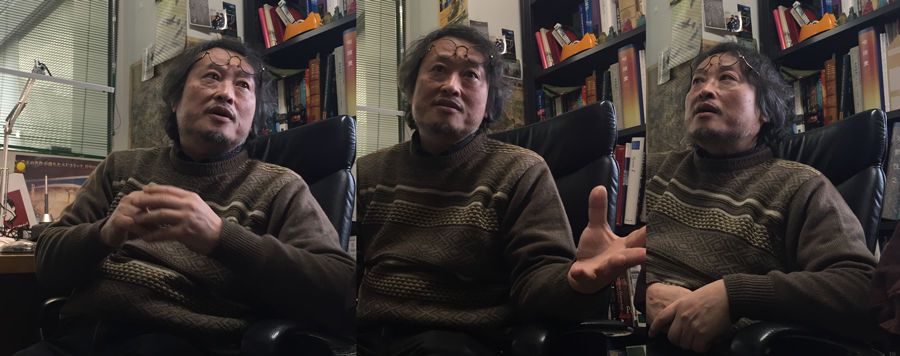
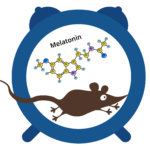
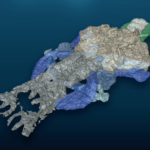


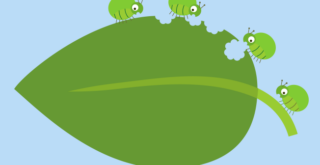



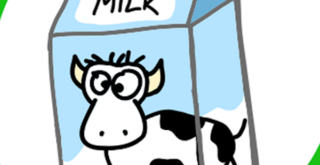
A motivating discussion is definitely worth comment. I believe that you ought
to publish more about this subject, it might not be a taboo subject but usually
folks don’t discuss these topics. To the next! Best wishes!!